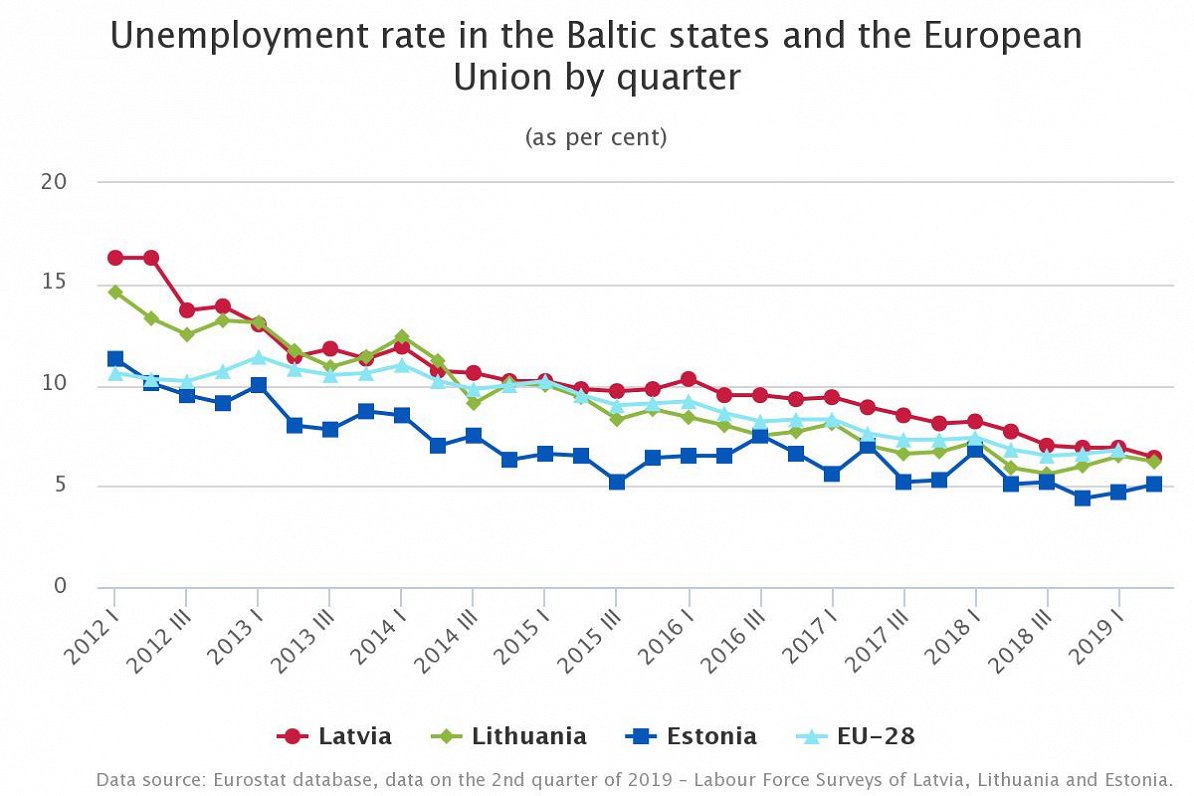Compared to the previous quarter, unemployment rate fell by 0.5 percentage points, and compared to the rate recorded a year ago, it dropped by 1.3 percentage points.
In the 2nd quarter, in Latvia there were 61.5 thousand unemployed persons aged 15–74, which is 13.9 thousand people fewer than a year ago and 5.4 thousand people fewer than in the previous quarter.
However, Latvia's unemployment rate continues to exceed the European Union (EU) average, as it has done since the 3rd quarter of 2008 (except for the 1st quarter of 2015 when both indicators were equal).
In addition, in the 2nd quarter, Latvia still had the highest unemployment rate in the Baltic states – 6.4 %, compared to 5.1 % in Estonia and 6.2 % in Lithuania.
In the 2nd quarter of 2019, the share of long-term unemployed persons, i.e., those who have been without work for one year or more, in the total number of unemployed persons fell – from 41.3 % to 40.0 %. During the same period the youth unemployment rate accounted for 15.1 %, which is 3.9 percentage points higher than a year ago and 1.6 percentage points higher than in the previous quarter. During the year, the number of young unemployed persons grew by 1,100.
In the 2nd quarter of 2019, 31.0 % or 433.5 thousand people aged 15–74 were classed as "inactive". i.e., were neither employed nor actively seeking a job. Compared to the 1st quarter of 2019, the inactive population increased by 600 people or 0.1 %, whereas over the year it rose by 5.5 thousand people or 1.3 %.
Commenting on the data Swedbank said:
Developments in the labour market typically lag developments in the economy. However, we can see some signs of softening growth affecting the labour market already now.
Labour force participation rate seems to have peaked last year. It eased in the second quarter to 69% as the number of economically active shrank faster than the working age population. This was driven by both changes in the age structure of population and the moderation of economic growth.
The number of employed fell after almost two years of growth. It was down by 0.4% compared to the same period last year, reflecting both easing growth and labour market shortages depending on the sector.
Another sign that softening economic activity is gradually reflected in the labour market was a decrease in the number of hours worked for the third quarter in a row.
Nevertheless, the survey data suggests the labour shortages remain elevated and the vacancy rate is still at its historical high.




























